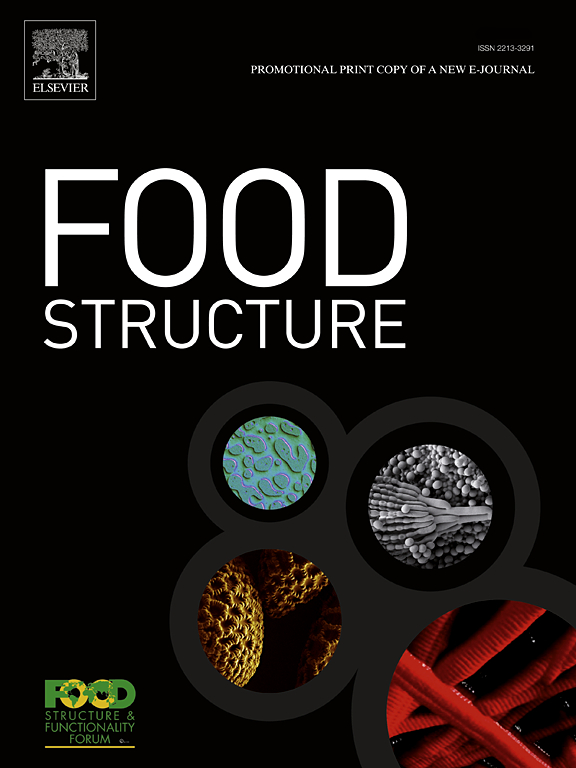木薯淀粉与木糖醇、阿拉伯胶和果胶的分子相互作用及其对其糊化性能和降解动力学的影响
IF 5.9
3区 农林科学
Q1 FOOD SCIENCE & TECHNOLOGY
引用次数: 0
摘要
采用核磁共振(1H-NMR)和差示扫描量热法(DSC)对添加不同浓度木糖醇(X)、阿拉伯胶(AG)和果胶(P)的木薯淀粉(TS)体系在4 °C条件下储存21天后的糊化性能和降解动力学进行了评价。添加剂的掺入降低了膏体的峰值粘度、最终粘度和挫折粘度,表明限制了TS与水和/或淀粉建立非共价相互作用的糊化,限制了进一步的水化和膨胀。根据1H-NMR结果,自由水分子参与了直链和支链淀粉链的重新结合;因此,它们的分子迁移率随着淀粉降解的进展而降低,这可以从自旋-自旋弛豫时间的减小中得到证明。DSC结果证实,X的加入延迟了TS的退化,可能是由于氢键相互作用的产生,而AG的加入则得到相反的结果,促进了TS分子的重组。P表现出浓度相关效应,在1 %水平时延迟TS退化,在2 %水平时加速TS退化。本研究结果揭示了TS与木糖醇、阿拉伯胶和果胶的分子相互作用及其对淀粉降解的调节作用,对开发具有多种工业应用价值的无麸质产品具有重要意义。本文章由计算机程序翻译,如有差异,请以英文原文为准。
Insights on the molecular interactions of tapioca starch with xylitol, Arabic gum, and pectin and their effects on its pasting properties and retrogradation kinetics
Pasting properties and retrogradation kinetics of tapioca starch (TS) systems with different added concentrations of xylitol (X), Arabic gum (AG), and pectin (P) were evaluated by nuclear magnetic resonance (1H-NMR) and differential scanning calorimetry (DSC) after storage at 4 °C for 21 days. The incorporation of the additives reduced the peak, final and setback viscosity of the pastes, indicating limiting gelatinization of TS for the establishment of non-covalent interactions with water and/or starch, restricting further hydration and swelling. Based on 1H-NMR results, free water molecules were involved in the reassociation of amylose and amylopectin chains; thus, their molecular mobility decreased with the progress of starch retrogradation, as evidenced by the diminishment of the spin-spin relaxation times. DSC results confirmed that the addition of X delayed TS retrogradation, possibly due to the generation of hydrogen bonds interactions, while opposite results were obtained when AG was added, which promoted TS molecules reorganization. P showed a concentration-related effect, since it delayed TS retrogradation at 1 % level and accelerated it at 2 % concentration. Results from this study provide insights on the molecular interactions of TS with xylitol, Arabic gum, and pectin and their modulating effects on starch retrogradation, which are valuable for the development of gluten-free products with varied industrial applications.
求助全文
通过发布文献求助,成功后即可免费获取论文全文。
去求助
来源期刊

Food Structure-Netherlands
Chemical Engineering-Bioengineering
CiteScore
7.20
自引率
0.00%
发文量
48
期刊介绍:
Food Structure is the premier international forum devoted to the publication of high-quality original research on food structure. The focus of this journal is on food structure in the context of its relationship with molecular composition, processing and macroscopic properties (e.g., shelf stability, sensory properties, etc.). Manuscripts that only report qualitative findings and micrographs and that lack sound hypothesis-driven, quantitative structure-function research are not accepted. Significance of the research findings for the food science community and/or industry must also be highlighted.
 求助内容:
求助内容: 应助结果提醒方式:
应助结果提醒方式:


